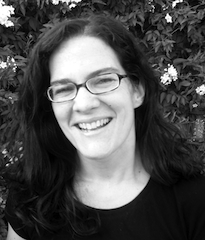
Orateurs invitésAna Rivero Site web
MiVEGEC "Maladies infectieuses et Vecteurs: Ecologie, Génétique, Evolution et Contrôle", IRD, Montpellier Research interests I work on the evolution of mosquito-Plasmodium interactions. Under natural conditions of transmission intensity, and even under the best laboratory conditions, malaria parasite loads in mosquitoes show a greater variability than that expected by standard statistical models which assume random parasite distributions. Similarly, impact of the parasite on the fitness of the mosquito can vary from virulent to relatively avirulent. My group has been using the avian malaria system to identify the genetic and environmental sources of heterogeneity in these two key parameters for malaria transmission. Avian malaria parasites share a distant common ancestor with human malaria parasites and have historically played an important role as models in the study of human malaria. Avian malaria is a unique animal model to understand the ecology and evolution of the disease both in the laboratory and in the field. It is much more prevalent (in some areas up to 80% of birds are infected) diverse (more than 600 mitochondrial cytochrome b sequences described thus far) and widespread (it is present in all continents except Antarctica) than any other known vertebrate malaria. Our initial focus was on mosquito-driven heterogeneity. We have worked on the role of the genetic background (insecticide resistance/susceptibility), and condition (nutrition, age) of the mosquitoes, the coinfection with bacterial endosymbionts (Wolbachia), or the infectious status of previous generations (transgenerationnal immune priming). We have also worked on the ability of Plasmodium to both manipulate mosquito behaviour and plastically adjust its within-bird transmission strategies in response to the availability of mosquitoes to maximize its own transmission. We are currently focusing on the role of parasite and host variability in shaping Plasmodium transmission, a crucial piece of the transmission puzzle for which there is still insufficient information in the malaria literature.
Thierry Wirth Site web Muséeum d'Histoire Naturelle de Paris, Institut de Systématique, Évolution et Biodiversité. Research interests Evolutionary History and Origin of Major Human Diseases |



